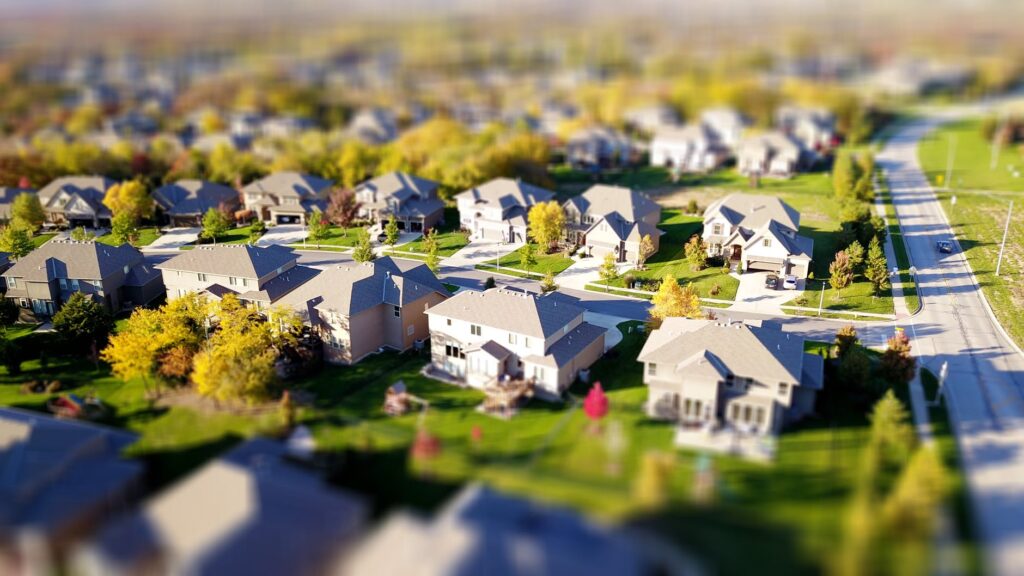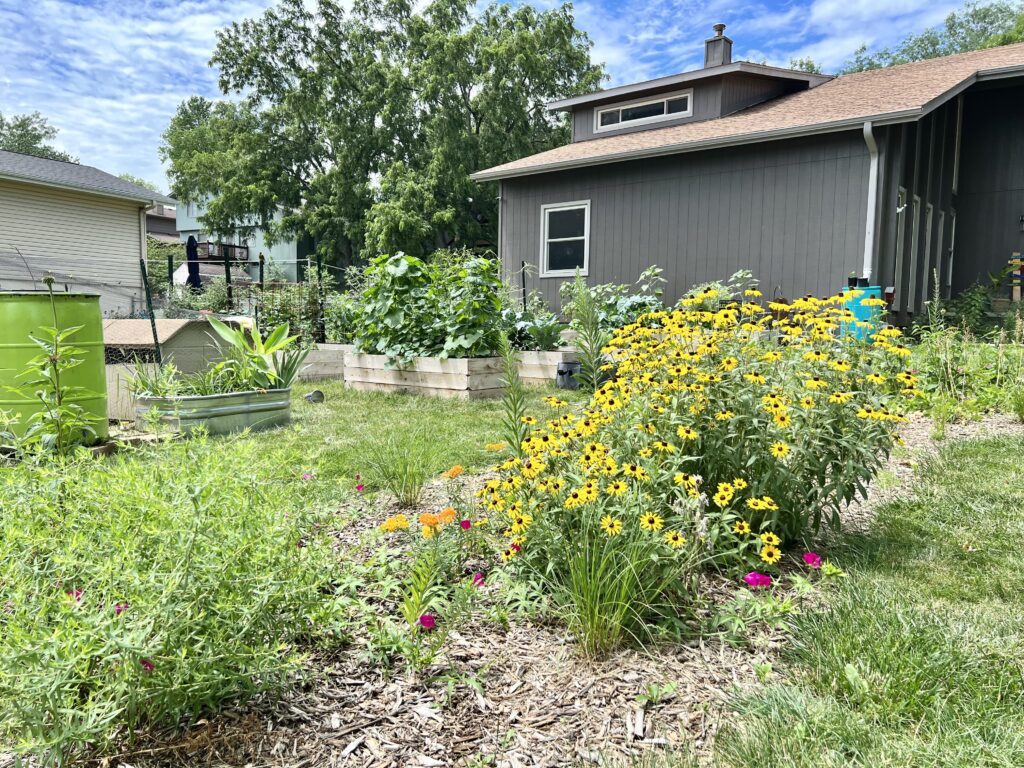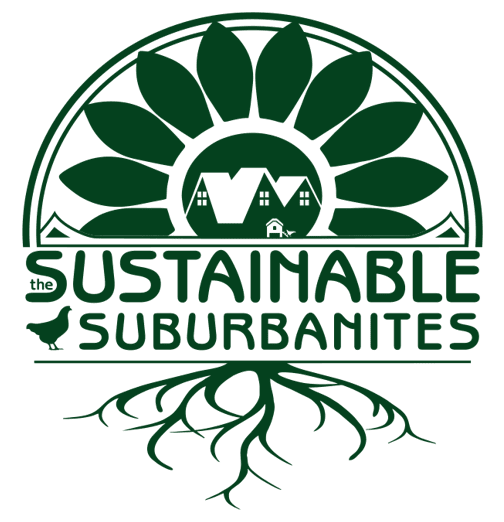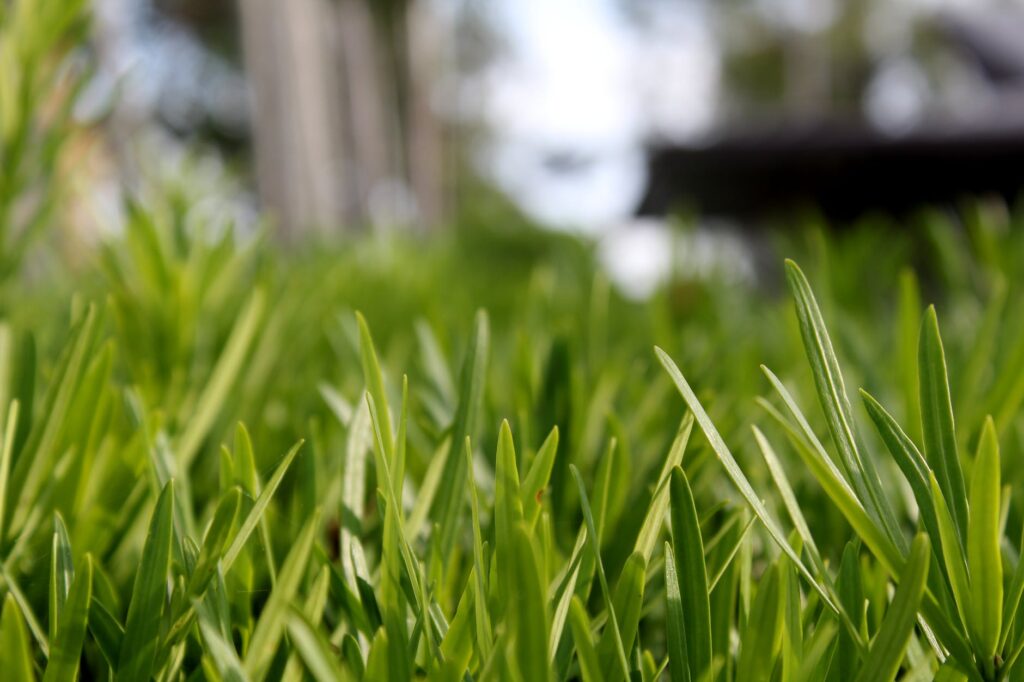Do you know how sometimes with languages, things don’t translate quite right? Like, there’s no direct way to say this thing in that language?
Sustainability works this way sometimes.
Folks often reach out to me looking for sustainable alternatives for things that truly don’t have one. They want the same thing they have even if the thing they have is not sustainable, nor can it be made to be sustainable. From dryer sheets to single-use shopping bags, there are plenty of things that are better off being entirely eliminated than “made more sustainable.”
None rings out more unsustainable and in need of elimination than this:
Your lawn.
This post may contain affiliate links, meaning we may earn a commission for any purchases made through our links.
The Suburban Lawn
There is no word for “turfgrass lawn” in the language of sustainability because turfgrass lawns are fundamentally unsustainable. There is no way to make the output of a non-native grass lawn worth the input of water, fertilizers, pest-control chemicals, and lawnmower emissions that get put into it.
If you want a sustainable lawn, fill your space with native plants, trees, and food crops. That’s the sustainable translation for “turfgrass lawn.”
Try as I might to explain this, folks still ask me frequently for “sustainable lawn care company” recommendations. And I don’t have one! That’s not a thing! I can recommend all sorts of local resources that can help you fill your lawn with native plants and food crops, but I cannot provide you with a company that will sustainably maintain your turfgrass lawn.

Greenwashing Lawncare
Unfortunately, lawn care companies have insidiously greenwashed their product so effectively that most folks see the “green chemical” advertisements and think that they’ve actually made a step in the right direction. Pamphlets full of fun facts about how much carbon a lawn can suck up are slapped on my door all summer long.
While I am normally a big fan of the idea that any step in the right direction is progress, I don’t think this step is actually a step in the right direction. If anything, it’s a step backward. Maintaining a manicured turf-grass lawn is the greatest defense of white human supremacy the average suburban dweller can make. In a sustainable and equitable culture, white American humans are not supreme. By continuing to center the predominantly white human perspective that turf lawns are desirable, we fail to do the work required to unwind how our entire planet came to center these wasteful ideals.

Anything your standard American turf-grass lawn can do for the environment, a lawn full of native plants, trees, and veggies can do far better. Those things serve an ecological and a social purpose.
Turfgrass is just green. It doesn’t belong there, and it doesn’t do enough good to make up for the damage it causes.
Thinking Critically about our Ethical Obligations to Change
If you have the financial ability to hire a lawn care company to maintain your turf grass, you most likely have the ability (and ethical obligation) to begin the conversion of your lawn into a more sustainable space. You certainly don’t have to do it all at once, and it doesn’t have to be every square inch. Heck, our yard is huge. It’s going to take us several more years to convert all the space we want to covert.
But we’ve gotten started. And you need to as well, in whatever way that works for you.
If this doesn’t sound appealing to you, please at least note that the continued use of valuable resources to maintain your lawn space for pure aesthetics is not only unsustainable, but it is unjust. Climate justice is social justice. And social justice requires that we use our money and resources for the betterment of all living things, worldwide.
Maintaining a turfgrass lawn is a commitment to quite the opposite of this because it centers a white human perspective. It says, “My lawn staying green and pretty per my suburbanized worldview is worth the sinking of entire island nations, the loss of indigenous spaces, exploitation of humans all over the world, and a whole host of other issues resulting from billions of dollars worth of resources being diverted into American lawns that produce nothing. The resources it takes to maintain it are my right, and the waste it creates is not my responsibility.”
What about the neighbors? They won’t like it.
Stop letting your neighbors rule you. That’s it. That’s the answer to how to handle the neighbors.
Don’t let covenants, Karens, (sorry nice Karens we still love you), and a desire to conform to historic suburban norms stop you from doing what is right for our planet. Do the work to break down the systems that have required conformity in your suburban space since it existed.
I know that if you’ve grown up in rural or suburban US of A, it is deeply conditioned within you to conform. But I promise: You simply need to get started to realize that you don’t actually have as much of a desire to conform as you think you do. The habit of constant social conformity is learned, and you can unlearn it.
I’ve met dozens of neighbors since we’ve moved here who have jumped right on the Let’s Change the Suburbs train with us. Every last one of them has told me the same thing: I’ve always wanted to play a part in this, but I didn’t know where to start.
They’ll tell you, now. This is where you start. By changing the conversation about the suburban lawn from inside the suburbs.

Now is the Time to Make a Plan
There’s no time like the present to start making a plan to convert your lawn (or more realistically, parts of your lawn.) Ditch the traditional lawn care company, and tell them why. Hopefully, some of them will be interested in transitioning their service offerings to the maintenance of more sustainable lawns and spaces! Commit to jumping out of your comfort zone next spring, and hype yourself up for the journey during these long winter months leading up to it.
Be sure to check out our Essential Reading List to help you build a base of knowledge to get started. These are written by experts who I think have a very personable and accessible writing style. I encourage you to learn everything you can from them!
As always, don’t hesitate to reach out to us with questions or if you need more recommendations. I read a great deal, and am always happy to talk through things with a reader. We’re also happy to help you navigate tough conversations with neighbors and HOAs as they arise. Because they will arise!
Change your lawn. Change the conversation. Change your suburb.
We believe in you!

